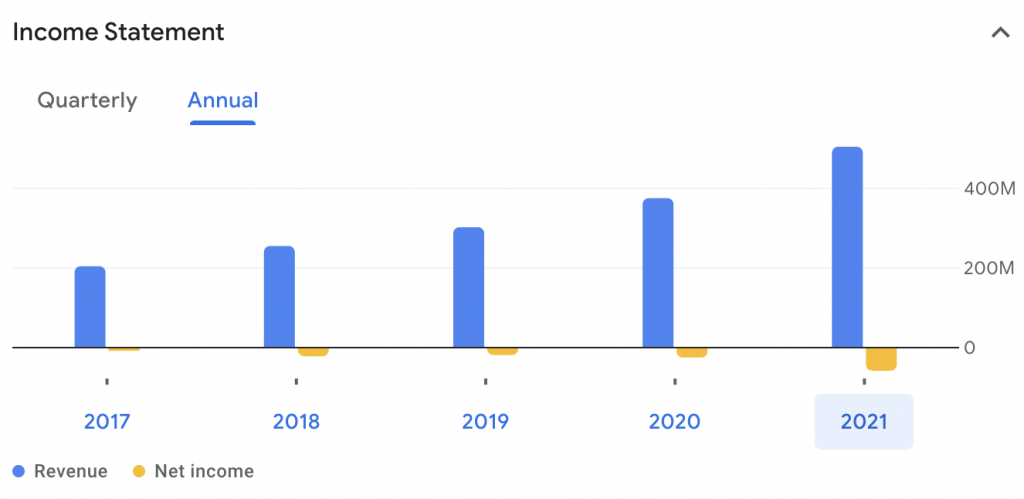Macro Trends: Supply and Demand
The global demand for highly skilled knowledge workers has been growing at an unprecedented rate. Technological advancement coupled with increasing capital deployed by global institutions is creating jobs faster than talent is created.
In most advanced economies, declining population growth and early retirements have caused a shortage of available labor. While educational institutions are continuing to produce more graduates each year, the expansion of intake lags a few years behind demand.
Technological advancement also means rapidly shifting skill requirements that further lower the available talent pool in specialized roles.
Preference for Remote Work
Productivity software was already preparing for a remote world. Covid-19 would have been more devastating to global productivity were it not for ready solutions for real-time and async collaboration.
These tools were put to the test and came out with flying colors. Processes were built to enable workflows matching the efficiency of in-office teams. Organizations realized the business could continue as usual; after all, many multinational companies had figured out how to build global teams. While there are considerable differences between running region-specific operations on a global level and remote teams for a while, infrastructure existed – it only needed to be adopted more wholeheartedly across the organization.
This realization was not limited to leadership; employees were quick to realize that remote work worked. The benefits of working remotely far outweighed the costs for most people leading to ‘The Great Resignation’ which punished organizations that failed to embrace the change.
Organizations have always acquiesced to the demands of the outperformers but managed to reign in the rest; with Covid-19, the power shifted to employees being in the driver’s seat.
Global Opportunities
This was primarily driven by the fact that talent was no longer bound by geography. A UI Designer in Bangalore could now apply for a position at a company based out of North America or Europe. At the same time, a UI Designer from a Tier-2 city could now gain employment with a tech firm based out of Bangalore.
While not entirely eliminated, the limitations of geography had been overcome – enough to disrupt the balance in the talent market. Inflated salaries due to exponential demand and cheap capital continued to rise until the looming recession (since early 2022) threw brakes on the runaway train.
For India, this slowdown might actually benefit skilled talent as advanced economies look to outsource more talent. The implications of this are two-fold:
- Increased demand
- Rising salaries
The bottom line: Companies will continue to face a talent crunch and hiring will remain a challenge for the forseeable future.
About that Bottom Line
Evidence of a shift toward on-demand and freelance talent is the revenues of the publicly listed freelance marketplace – Upwork. In just 4 years their revenue grew 2.5x. This is an indicator that outsourcing to individuals is picking up the pace.
While the IT/ITES industry continues to outpace the Indian economy, companies are starting to exhibit a preference for on-demand talent which has certain advantages. Interestingly, there is a general trend toward service-oriented multinationals – that previously maintained a bench strength – choosing to reduce the burden on their payrolls by tapping into on-demand talent.
From the utilization of 70%-75% a decade ago to a utilization rate of >90% in the last few years, IT service firms have long been on the path to ‘zero benches’. Contract agencies have come to their aid, providing staffing on a project basis. Unfortunately, contract staffing agencies no longer have high-quality talent as top performers become their own employers.
The answer to this is on-demand marketplaces such as IndieFolio. With stringent selection criteria that filter out 97% of applicants, IndieFolio’s creative talent pool enables companies of all sizes to streamline, scale, and supercharge their creative operations.

The Rise of Polywork among Gen Z
Uber was one of the catalysts for the gig economy. While it was a blue-grey collar marketplace, the message delivered was clear – the next stage in the evolution of work was here.
Spurred by an economic environment of abundance, a desire to do meaningful work, a need for autonomy, and a craving for novelty, young millennials, and Gen Z are embracing the white-collar gig economy. It’s not uncommon to see those under 25 years of age working multiple jobs. This phenomenon will only increase in prevalence as platforms such as Indiefolio usher in the Fifth Industrial Revolution.
Productivity and the Fifth Industrial Revolution
In his critically-acclaimed 2005 book – The World is Flat – Thomas L. Friedman wrote about globalization opening up the world. It was a consequence of the Fourth Industrial Revolution which utilized the power of silicon to connect people and computers across the world. But we’re on the cusp of a transition to the next stage.
Adam Smith’s economic masterpiece The Wealth of Nations, published in 1776, was the first academic study of productivity.
He argued that the increase in the wealth of a nation lies in the increase in productivity through a greater division of labor. This division of labor is the breaking down of production processes into smaller, specialized parts.
💡 Summarized by Ha-Joon Chang in his book ‘Economics: The User’s Guide’, this increase in productivity was due to 3 key reasons:
- Practice makes perfect: repetition of one or two tasks makes workers good at what they do more quickly
- Reduction in transition costs: workers do not have to spend time moving – physically and mentally – between different tasks
- Mechanization and Automation: A finer breakdown of the process makes each step easier to be automated and thus be performed at superhuman speed
Some companies are more attractive than others
Ask any top creative talent for their dream company. There’s a high likelihood that the likes of Google, Meta, Netflix, CRED, Razorpay, and other product companies top the list. Some companies are inherently more attractive than others and have no challenges with finding talent for creative or tech roles.
While these companies hire at an incredible pace, the number of candidates far outstrips the openings. Highly skilled talent that doesn’t get through has started to offer their skills through on-demand platforms as it unlocks exciting opportunities that might not be available at a full-time role elsewhere.
At IndieFolio, we see this in the make-up of our talent base. Thousands of designers in our creative network worked at leading agencies, product companies, and multinational firms.
Ancient wisdom says “Where there is nectar, there go the bees”. The cream of the global workforce demands exciting work.
How to solve this
Over the last 5 years, the design industry has made a lot of strides in creating efficient workflows through the creation of DesignOps teams. A compounding effect has been the emergence of tools for real-time collaboration, asset management, communication, and documentation, that make these systems robust.
In a typical product organization, design leaders help create a visual language and design system. In conjunction with a well-defined DesignOps system, any skilled designer can get started working on high-impact projects in a matter of hours.
While it may seem a little far-fetched, companies of all sizes are warming up to this. At Gupshup, a conversational AI platform, the marketing division decided to maintain a lean design team with the objective of creating an extended creative team that could be upsized or downsized on demand. For a company that does a fair amount of marketing, this was a bold decision. Gupshup isn’t a traditional unicorn company that looks to ride trends. Almost 2 decades since their founding, they’ve built playbooks and execution manuals that enable a systematic approach to novel ideas.
To their VP of Marketing and Design Lead, it was clear that retaining specialists across design, animation, and video editing was going to be tricky. Marketing activities have an ebb and flow that can be unpredictable at times. IndieFolio’s managed marketplace gave them access to high-quality talent that was available at a moment’s notice. Whether it was turning around a series of animated videos for their Shark Tank India Ad campaign, or driving the entire redesign of collaterals after a rebranding, Gupshup had an on-demand team that fit into their workflow.
By developing a strong design system, creatives could be onboarded in a matter of hours and deliver their first output on Day 1.
Making the transition
As with most systems, change is best done gradually. While for smaller organizations and startups the process might be simpler, enterprises often have stricter security, more red tape, and many more stakeholders.
With that in mind, we’ve put together a comprehensive resource to help with the integration of on-demand talent into your organization. Borrowing inspiration from the Harvard-BCG Building the On-Demand Workforce Report, our guide will help you get started with very actionable steps.
Our recommendation would be to start with a function that is best suited to this structure. While we might be biased given that we operate the largest creative talent network, people working in design and creative fields have always pursued freelance work or worked with multiple concurrent projects. Moreover, what you see is what you get. Unlike a piece of code that may not be the most optimally written, a digital banner or email template has no hidden risks.
If you think your organization could benefit from the on-demand talent, reach out to us for a demo and walkthrough of how companies such as Intuit, Gupshup, and Ogilvy use IndieFolio.






